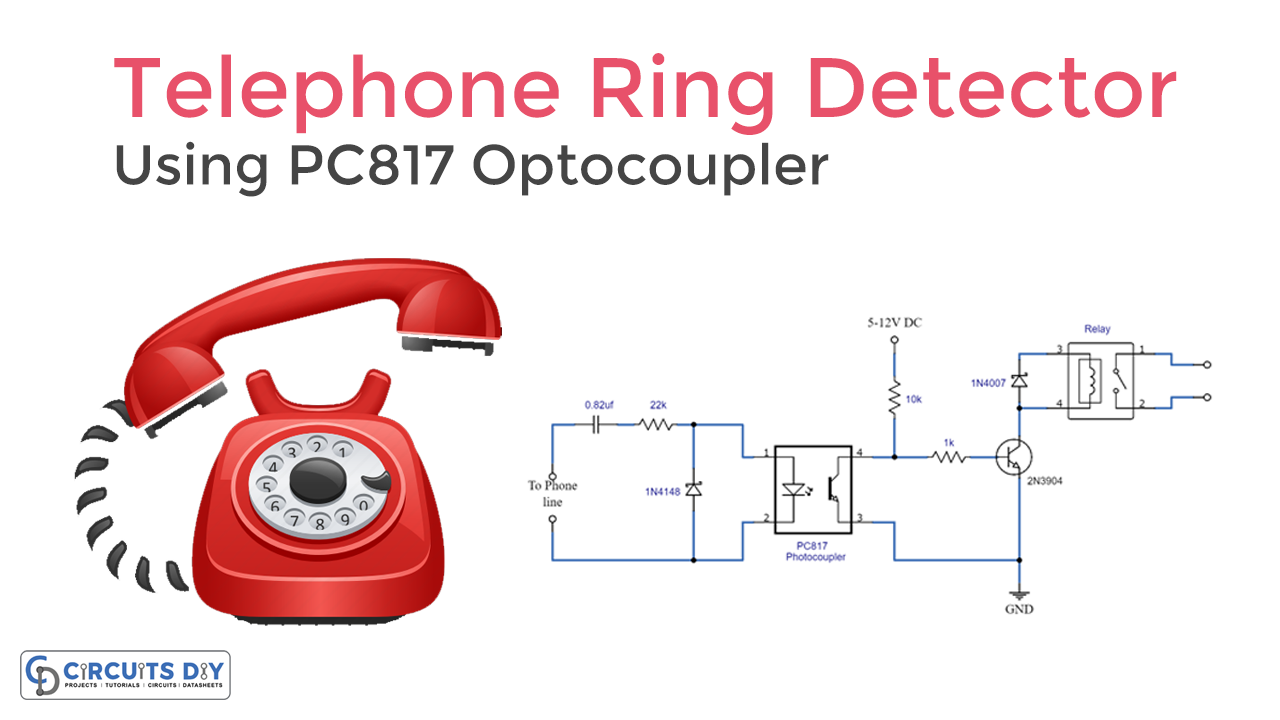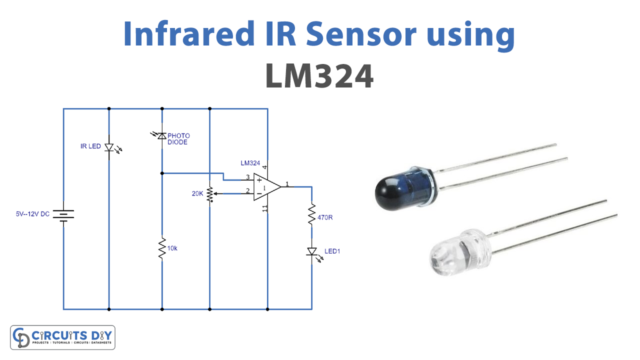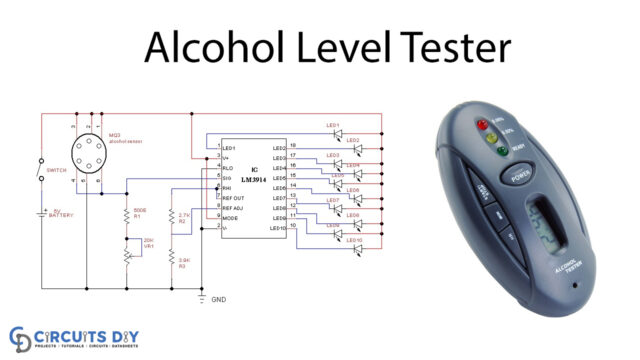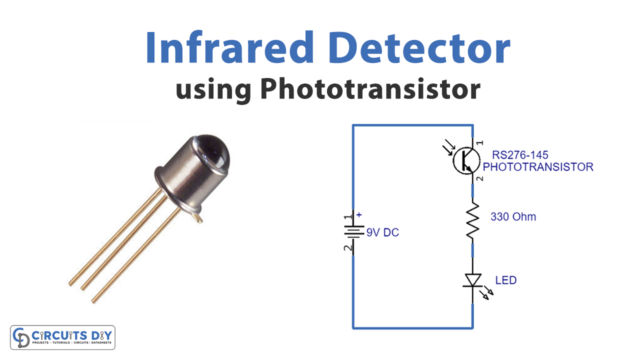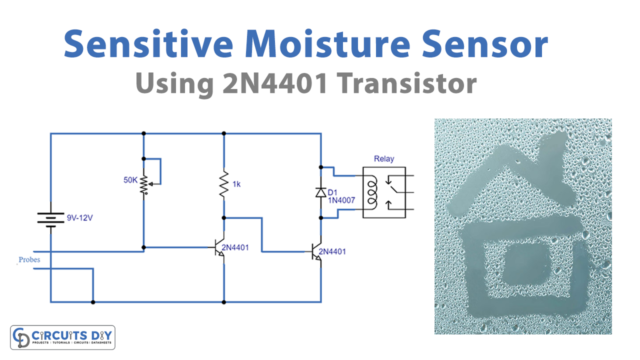In this tutorial, we are making a very simple and useful project of a Telephone ring detector circuit. The purpose of this circuit is to activate a loud buzzer when the phone rings or it can also activate some LEDs or a lamp at nighttime if the buzzer creates a disturbance for you. Since this circuit uses a relay switch at its output you can operate any AC/DC appliance according to your convenience. This circuit is quite efficient because it responds only to the telephone’s ring signals and not to other tones like dial pad tone etc.
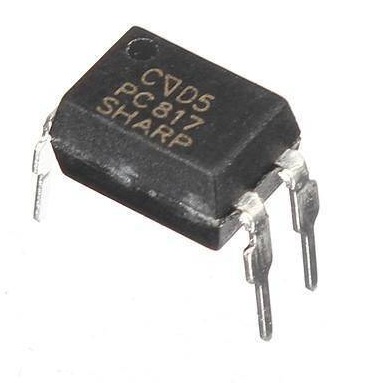
Hardware Components
The following components are required to make a Telephone Ring Detector Circuit
| S.no | Component | Value | Qty |
|---|---|---|---|
| 1. | Input Supply DC | 5-12V | 1 |
| 2. | Resistor | 1K, 22K, 10K | 1, 1, 1 |
| 3. | Ceramic Capacitor | 0.82 | 1 |
| 4. | Diode | 1N4148, 1N4007 | 1, 1 |
| 5. | Photocoupler | PC817 | 1 |
| 6. | Transistor | 2N3904 | 1 |
| 7. | Relay | – | 1 |
PC817 Pinout
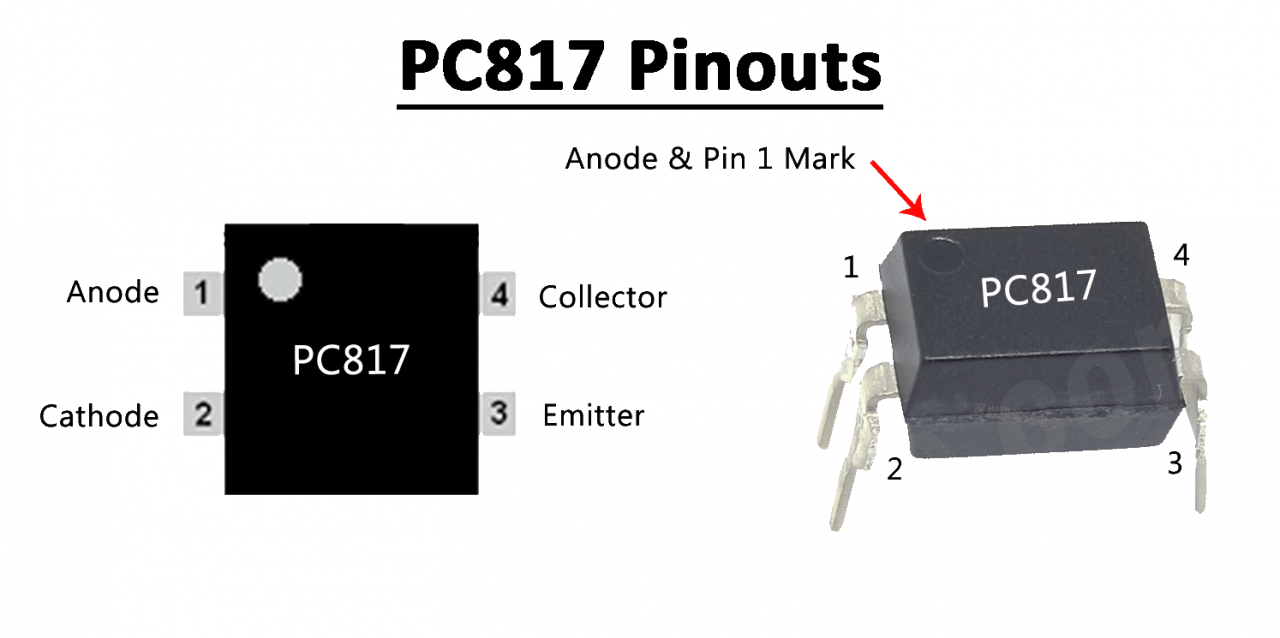
For a detailed description of pinout, dimension features, and specifications download the datasheet of PC817
Telephone Ring Detector Circuit
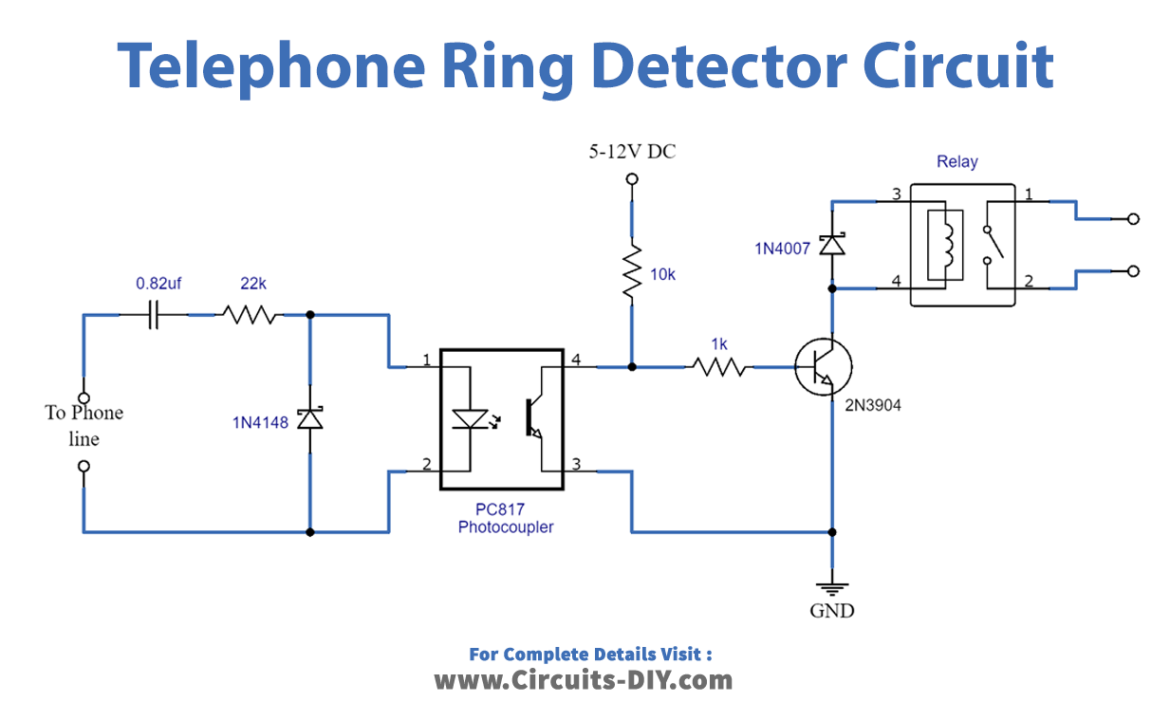
Working Explanation
This circuit can be operated at any voltage from 5 to 12 DC volts. It is only using a few components like a 2N3904 transistor, photocoupler, relay switch, and some more discrete components. A photocoupler is also known as an optocoupler and it is a device that has an LED and a phototransistor. When the phone rings the LED in the optocoupler will glow and this light is sensed by the phototransistor in the optocoupler. Now a signal is generated from the optocoupler which is passed on to transistor 2N3904 which will activate the relay switch. Any device connected with the relay switch will now be turned on.
Make sure to connect the phone’s lines in the same way as shown in the circuit diagram, a capacitor is used to filter the signal along with a current-limiting resistor. This signal is later passed through a diode before going into the photocoupler.

